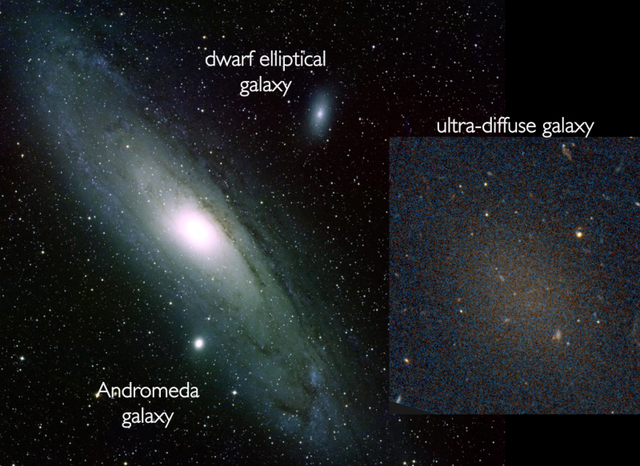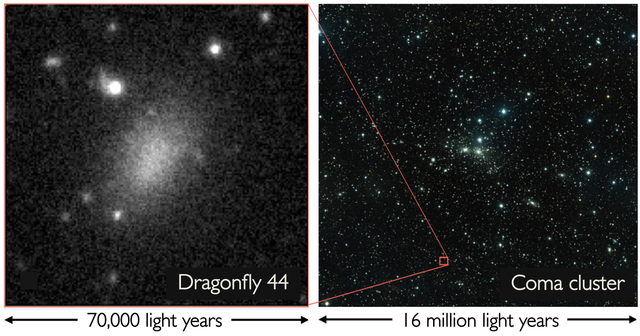The existence of the most diffuse class of galaxies known in the universe has been confirmed by an international team of researchers led by Pieter van Dokkum at Yale University using the W. M. Keck Observatory. ADVERTISING The existence of
The existence of the most diffuse class of galaxies known in the universe has been confirmed by an international team of researchers led by Pieter van Dokkum at Yale University using the W. M. Keck Observatory.
These “fluffiest galaxies” are nearly as wide as our own Milky Way galaxy – about 60,000 light years – yet harbor only 1 percent as many stars. The findings were recently published in the Astrophysical Journal Letters.
“If the Milky Way is a sea of stars, then these newly discovered galaxies are like wisps of clouds”, said van Dokkum. “We are beginning to form some ideas about how they were born and it’s remarkable they have survived at all. They are found in a dense, violent region of space filled with dark matter and galaxies whizzing around, so we think they must be cloaked in their own invisible dark matter ‘shields’ that are protecting them from this intergalactic assault.”
The team made the discovery by combining results from one of the world’s smallest telescopes, as well as the largest telescope. The Dragonfly Telephoto Array used 14-centimeter state of the art telephoto lens cameras to produce digital images of the very faint, diffuse objects. Keck Observatory’s 10-meter Keck I telescope, situated atop Mauna Kea, separated the light of one of the objects into colors that diagnose its composition and distance using its Low Resolution Imaging Spectrograph.
Data from Keck Observatory showed the diffuse “blobs” are very large and very far away, about 300 million light years, rather than small and near. The blobs can now safely be called Ultra Diffuse Galaxies, or UDGs.
The UDGs were found in an area of the sky called the Coma cluster, where thousands of galaxies have been drawn together in a mutual gravitational dance.
“Our fluffy objects add to the great diversity of galaxies that were previously known, from giant ellipticals that outshine the Milky Way, to ultra compact dwarfs,” said University of California, Santa Cruz Professor Jean Brodie.
“The big challenge now is to figure out where these mysterious objects came from,” said Roberto Abraham, of the University of Toronto. “Are they ‘failed galaxies’ that started off well and then ran out of gas? Were they once normal galaxies that got knocked around so much inside the Coma cluster that they puffed up? Or are they bits of galaxies that were pulled off and then got lost in space?”






